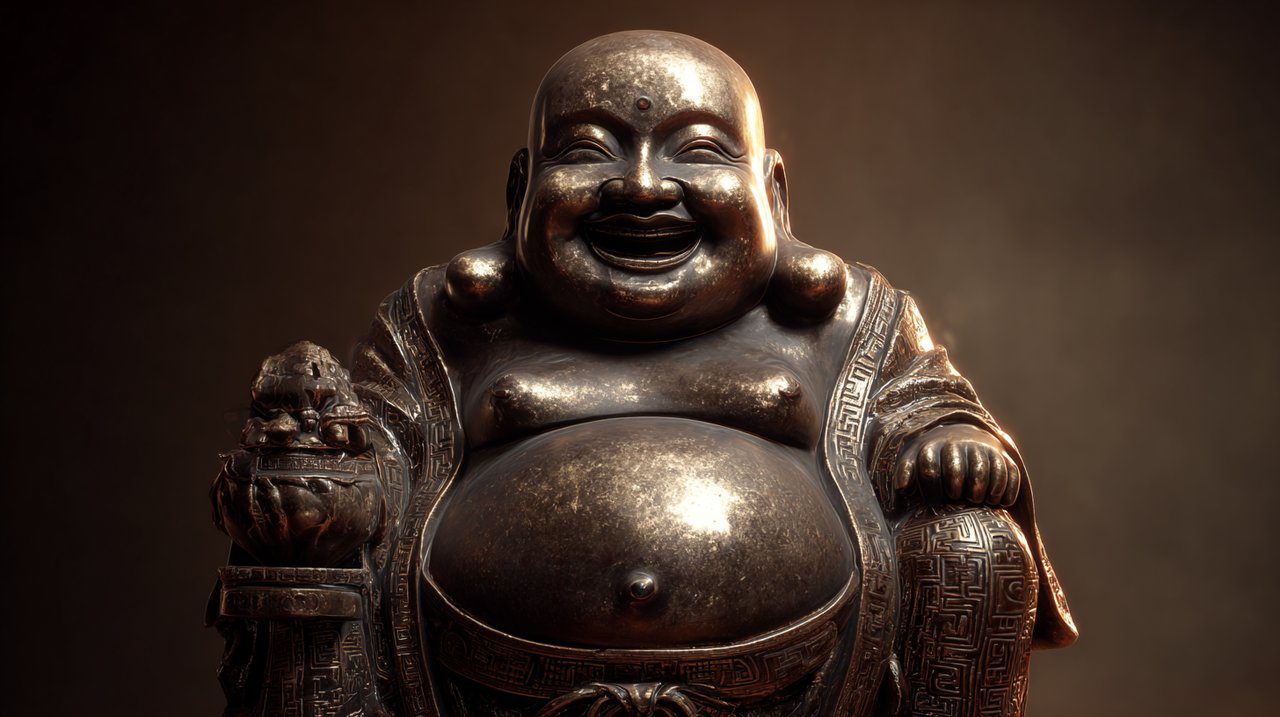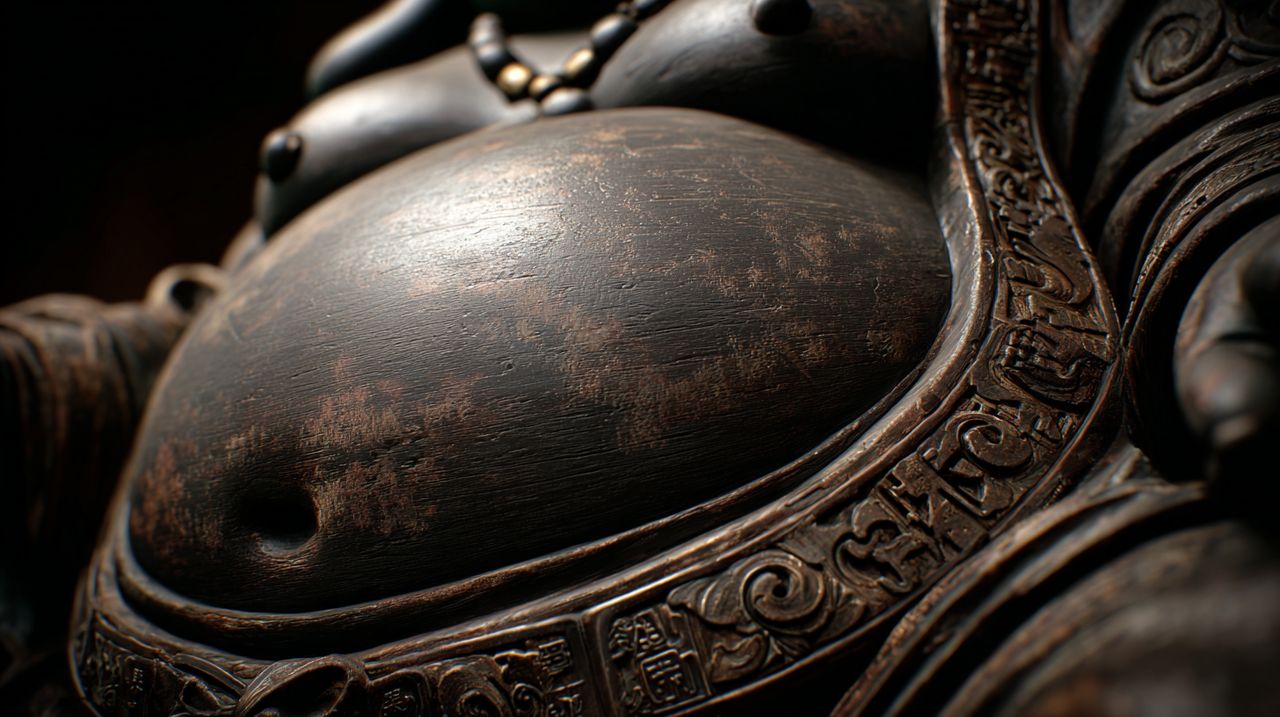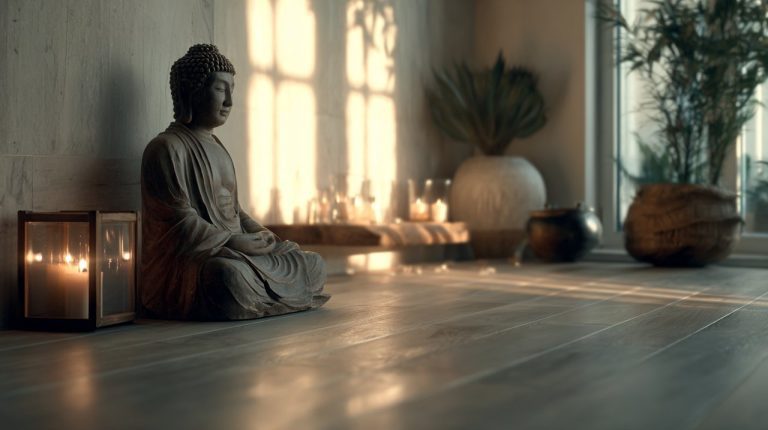Happiness Buddha Statue: An Icon of Joy and Abundance for Modern Living
The Happiness Buddha Statue, widely recognized by its jovial countenance and rotund belly, is far more than just a charming decorative piece. This beloved figure, known as Budai in Chinese Buddhism and Hotei in Japanese folklore, stands as a powerful symbol of good fortune, contentment, and abundance across East Asian cultures and beyond.
His infectious laughter and benevolent demeanor are an invitation, bringing a sense of peace and prosperity into any space he inhabits. He’s a constant, joyful reminder of life’s simple, profound pleasures.

Unpacking the Benevolent Figure of Budai
Behind the iconic Laughing Buddha lies the semi-historical Chinese monk, Budai, who lived during the tenth century. He was an eccentric yet deeply compassionate Zen master, famous for his wanderings with a large sack, his perpetually cheerful disposition, and a profound love for children.
Intriguingly, Budai is often considered an incarnation of Maitreya, the future Buddha, whose arrival is prophesied to usher in an era of enlightenment and global peace. This connection elevates the statue from a mere representation of happiness to a powerful harbinger of a joyful future, rooted in the rich tapestry of Buddhist origins and core teachings. Delve deeper into the foundational principles of Buddhism here.
The Rich Tapestry of Symbolism and Meaning
Every element of the Happiness Buddha Statue carries significant meaning, offering layers of insight into its cultural and spiritual importance. Let’s explore what each feature represents:
- The Big Belly: This prominent feature isn’t just for show; it symbolizes prosperity, good luck, and immense generosity. Many believe that gently rubbing his belly brings good fortune – a cultural tradition that speaks to our desire for connection with this joyful figure.
- The Sack: Budai’s sack is often depicted as bottomless, containing not only wealth and food but sometimes even the sorrows of the world, which he carries away. It signifies an inexhaustible abundance and the boundless capacity to provide for others.
- Beads/Rosary: Holding a string of prayer beads symbolizes meditation, spiritual practice, and the infinite cycle of life. This mirrors the deeper intention and meaning behind various Buddhist beads bracelets, which serve as tools for mindfulness and spiritual focus. Discover the significance of Buddhist beads bracelets and how to wear them with intention.
- Children: When surrounded by children, the statue beautifully represents fertility, happiness, and the pure, unadulterated joy of family life.
- Money/Gold Ingots: Sometimes seen holding gold ingots or coins, these elements directly symbolize wealth and material prosperity, reflecting the desire for abundance in all forms.

These collective attributes make the statue a potent emblem for a truly holistic sense of well-being, encompassing both tangible comfort and profound inner peace.
Cultural Significance and Optimal Home Placement
Across China, Japan, and other parts of Asia, the Happiness Buddha holds a deeply revered place in homes, businesses, and temples. People thoughtfully place these statues with the intention of attracting positive energy, wealth, and harmony into their environments.
Within the ancient art of Feng Shui, the placement of a Happiness Buddha statue is carefully considered to maximize its beneficial influence. This practice, which delves deep into understanding environmental energy, offers specific guidance. Learn more about the principles of Feng Shui and how to apply them for harmonious living.
Here are some key placement recommendations:
- Main Entrance: Placing the statue facing the main door is believed to welcome good fortune and positive chi (life energy) directly into your home, setting an inviting tone from the moment you enter.
- Living Room: A statue positioned in the living room is thought to promote family harmony, foster happiness, and create a welcoming atmosphere for guests.
- Office/Workplace: Strategically placed on a desk or in a prominent area, the Happiness Buddha can attract business success and financial gain, inspiring a positive and prosperous work environment.
- Wealth Area: According to Feng Shui Bagua maps, placing the statue in the southeast corner of a room or home is specifically recommended to enhance prosperity and draw in wealth energy.
Ultimately, regardless of specific placement rules, the mere presence of the Laughing Buddha is intended to uplift spirits and serve as a gentle reminder of the importance of joy and contentment in our daily lives.
Beyond Materialism: A Profound Spiritual Reminder
While often associated with wealth and good fortune, the deeper spiritual message of the Happiness Buddha truly transcends mere material gain. His serene smile and joyful demeanor serve as a powerful invitation to cultivate inner peace, practice generosity, and deeply appreciate life’s simpler pleasures.
He encourages us to release worries, embrace compassion, and discover profound happiness within ourselves. This resonates deeply with Zen philosophy, which emphasizes living fully in the present moment, finding peace amidst life’s currents, and recognizing that true abundance comes from within.
The Happiness Buddha reminds us that true prosperity isn’t just about what we accumulate, but about the joy we cultivate, the peace we embody, and the compassion we share.
The enduring popularity of the Happiness Buddha Statue lies in its universal message of joy, resilience, and the pursuit of a fulfilling life. More than just an ornament, it stands as a gentle yet powerful nudge towards a more optimistic outlook—a timeless beacon of contentment that extends far beyond the tangible.
It’s a beautiful symbol reminding us that true abundance is found not just in what we have, but in how we choose to experience the world.
💡 Frequently Asked Questions
The Happiness Buddha Statue, known as Budai in Chinese Buddhism and Hotei in Japanese folklore, is a symbol of good fortune, contentment, and abundance, recognized by its jovial countenance and rotund belly.
The historical figure behind the Laughing Buddha is Budai, a semi-historical Chinese monk who lived during the tenth century. He was an eccentric yet compassionate Zen master, known for his cheerful disposition and love for children, and is often considered an incarnation of Maitreya.
His large belly symbolizes prosperity and good luck, the sack signifies abundance, beads represent spiritual practice, children symbolize fertility and family joy, and gold ingots or coins directly symbolize wealth and material prosperity.
According to Feng Shui, it can be placed facing the main entrance to welcome good fortune, in the living room for family harmony, on a desk in an office for business success, or in the southeast corner (wealth area) of a room or home to enhance prosperity.
Beyond material gain, the Happiness Buddha's deeper spiritual message encourages cultivating inner peace, generosity, and an appreciation for life's simple pleasures, serving as a reminder to embrace compassion and find happiness within oneself.







